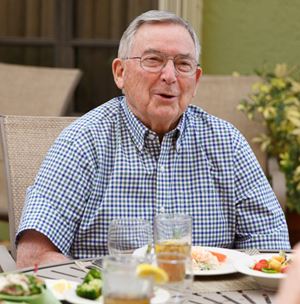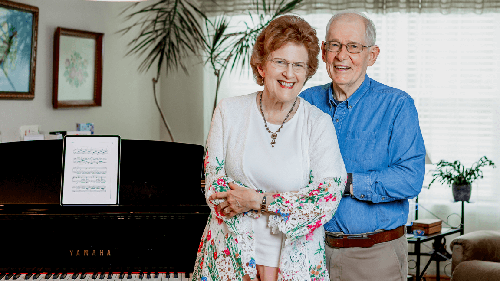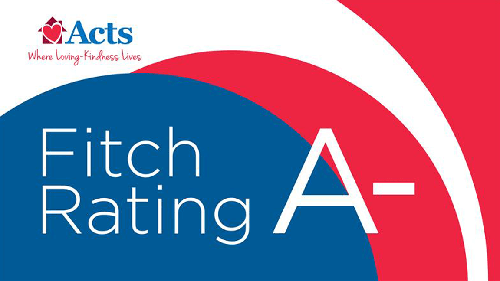What is Active Retirement? – Frequently Asked Questions

For today's retirees, the notion of a "traditional" retirement, characterized by inactivity and leisure, is often far less appealing than the idea of an active retirement. But what does active retirement mean? Let's explore some frequently asked questions.
What is it? Active retirement defined?
An active retirement definition goes beyond simply keeping busy. It's about choosing to pursue a lifestyle that fosters continued well-being, purpose, social engagement, and opportunities for personal growth. It's about remaining physically active, staying intellectually stimulated, and actively participating within your community.
What are the hallmarks of an active retirement?
The hallmarks of an active retirement involve staying physically, mentally, and socially active. Here are more details:
- Physical Activity: Regular exercise is crucial for maintaining physical and mental health throughout your retirement years. You might join a group fitness class led by a certified instructor, participate in a low-impact water aerobics session, or simply go for a brisk walk or bike ride outdoors. Physical activity strengthens your muscles and bones, improves cardiovascular health, boosts energy levels, and can even help to improve cognitive function.
- Mental Stimulation: Embracing hobbies you've always enjoyed or exploring new ones keeps your mind sharp and engaged. Look for a vibrant environment that fosters intellectual curiosity. You could delve into a captivating novel with a book club, learn a new language, or attend lectures and workshops on a variety of topics. Never stop learning and growing – it's a key ingredient to an active retirement lifestyle.
- Social Connection: Developing a strong social network is essential for well-being in retirement. Try to join a community that fosters a sense of belonging and connection. Strike up conversations with friendly neighbors, join a local club focused on your passions, or participate in social events and activities. The social connections you forge now will enrich your life and provide a strong support system.
- Sense of Purpose: Volunteering, mentoring, or engaging in activities aligned with your interests gives meaning and focus to your retirement years. It's always worthwhile to be on the lookout for volunteer opportunities. You could share your knowledge and experience by tutoring children, assisting at a local animal shelter, or helping to organize community events. Giving back to others is a rewarding way to stay active and make a positive impact in the world.

Is an active retirement achievable for everyone?
Absolutely! Active retirement isn't about maintaining a certain level of fitness or pursuing rigorous activities. Active retirement is about tailoring your lifestyle to what fits you best and what brings you joy. Adapt activities to your abilities and explore new interests at your own pace.
Limited mobility? Not a problem. Here are some examples of how those with limited mobility can stay active in retirement:
Physical Activities:
- Chair yoga or tai chi: These gentle exercises promote flexibility, balance, and mindfulness, and can be easily adapted for those with limited mobility.
- Water aerobics: The buoyancy of water takes pressure off your joints, making this a safe and effective way to get a low-impact workout.
- Take short walks or use scooters or wheelchairs to explore walking paths or nature trails.
Mental Activities:
- Take courses or lectures on a variety of topics.
- Join a club or make friends with likeminded residents who enjoy puzzles, crosswords, or sudoku to keep your mind sharp.
Social Activities:
- Participate in book clubs, card games or discussion groups that meet regularly.
- Organize game nights or social gatherings with friends and neighbors.
- Volunteer for organizations that need phone support or administrative assistance.

What are the benefits of an active retirement?
The benefits of an active retirement include improved longevity in your physical and mental state. Here are some examples:
- Improved Overall Health: Regular exercise and mental stimulation benefit both your physical and cognitive health, reducing the risk of chronic conditions and cognitive decline.
- Enhanced Sense of Well-being: Engagement with others and pursuing what you love promotes a sense of purpose and fulfillment, leading to greater happiness.
- Stronger Social Ties: Staying socially active helps combat feelings of loneliness and isolation, which is vital to sustained longevity.
- Increased Longevity: Studies show an active retirement can lead to a longer, healthier quality of life.
How do Acts Retirement-Life Communities facilitate an active retirement?
Acts communities are designed with your active lifestyle in mind. We offer:
- Fitness facilities and wellness programs: Our on-site amenities create easy access to exercise and wellness opportunities, from fitness centers to swimming pools, Pickleball courts, and more.
- On-site classes, lectures, and workshops: A diverse array of activities appeals to every interest and promotes learning.
- Clubs and social groups: These facilitate connection with like-minded individuals who share your passions.
- Volunteer opportunities: Give back to your community while finding purpose and creating a sense of belonging.
Additional Questions?
If you have further questions about what active retirement is or how Acts can help you achieve this fulfilling lifestyle, don't hesitate to ask! Contact us today to learn more and discover how we can support your journey toward a vibrant, active retirement. Or explore additional resources to learn more about retirement and retirement communities in general.





